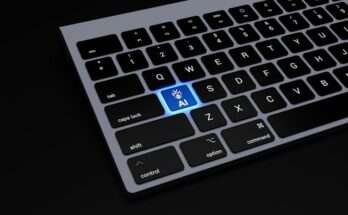How to Create an Experiential Prototype، Before you get to finalizing your product design and manufacturing, you may want to consider creating an experiential prototype. An experiential prototype is a physical version of your design that allows people to interact with it in much the same way they would use the final product. It’s one of the best ways to validate whether or not your design will actually solve your target audience’s problems—and an inexpensive one at that! Here’s how to create an experiential prototype and validate your product design before committing to large-scale production.
How to Create an Experiential Prototype
- Is it time for an experiential prototype?
- What are the benefits of creating a prototype?
- The 3 steps of experiential prototyping
- Research your ideal user’s needs
- Create your wireframe prototype
- Implement your interactive mobile app prototype using AppCooker

Is it time for an experiential prototype?
An experiential prototype is a type of prototype that allows users to interact with and experience a product or service. This can be done through simulations, prototypes, or even by using the actual product or service.
Creating an experiential prototype can help you in a few ways:
-It allows you to test your product or service with real users and get feedback.
-It can help you reduce the risk of investing too much time and money into something that may not work.
-It can help you validate your idea and make sure there is a market for it.
If you’re thinking about creating an experiential prototype, here are a few tips:
-Start small and simple. You don’t need fancy equipment to create an experiential prototype. You just need people who want to participate, some creativity, and a little imagination. Use household items such as fabric, duct tape, cardboard boxes, toys, Play-Doh, or Legos if you don’t have any other materials around. Sometimes a new way of looking at the problem is all you need to solve it!
Make sure everyone understands what they will be doing before they begin. Walk them through the process so they know what they should expect during each stage of their participation in your experiment.
-Observe them closely while they try out your design/product/service so that you can gather valuable data on their reaction and thoughts as well as measure their emotional response when interacting with it.
What are the benefits of creating a prototype?
There are many benefits to creating a prototype, including:
1. Allowing you to test your product or service before fully committing to it. This can save you time and money in the long run by ensuring that your idea is viable.
2. Helping you to get feedback from potential customers. This can be invaluable in shaping the final product or service.
3. Giving you a chance to see if your business idea is actually feasible. Prototyping can help identify any potential problems early on.
4. Allowing you to pitch your idea with confidence, knowing that you have a working product or service.
5. Helping you raise funding, as investors will be more likely to invest in a business with a prototype than one without one. The bottom line is that there are many reasons why it’s worth taking the time to create a prototype for your project.
One of the most important things when designing a prototype is deciding which type of prototype best suits your needs. While there are many different types of prototypes, they all fall into two main categories: functional prototypes and experiential prototypes. A functional prototype focuses on how something works while an experiential prototype focuses on how something feels (i.e., how someone would experience using the product). For example, consider Google Glass – this was not just about having voice control over what people could see; this was also about making people feel like they were in some futuristic movie where everyone has augmented reality goggles!
The 3 steps of experiential prototyping
1. Get a clear understanding of the problem you’re trying to solve. This will help you create a prototype that is focused and relevant.
2. Develop a rough idea of what your solution might look like. This can be done with sketches, wireframes, or even just by writing down a description of your proposed solution.
3. Create a prototype that allows you to test your solution with real users. This step is crucial in order to get feedback and refine your idea before investing too much time and resources into it. The final product may need some refinement based on user responses and data from surveys, interviews, etc. After prototyping, the team should have enough information to answer key questions about their solutions: are people using this? What do they think about it? What would they change? And so on.
Step 1 – Research your ideal user’s needs
In order to create an experiential prototype, you need to first understand the needs of your ideal user. What are their pain points? What does their daily routine look like? What are their goals and motivators? Answering these questions will help you design a prototype that meets their needs. Step 2 – Sketch out the functionality: Once you have identified what your product should do for your users, sketch out what it would look like for them to accomplish those tasks. Remember to consider the flow of the product from one task to another and think about where there might be issues with this experience. Step 3 – Work backward: Now that you know how people would use your product, work backward in determining how they might interact with it on a screen-by-screen basis.
Step 2 – Create your wireframe prototype
1. AppCooker is a great tool for quickly creating interactive mobile app prototypes.
2. It’s easy to use and doesn’t require any coding knowledge.
3. Plus, it’s free!
4. To create a prototype with AppCooker, first, download the app and launch it on your computer.
5. Then, create a new project and name it something relevant to your app idea.
6. Once you’ve created your project, you can start adding screens and elements.
7. To make your prototype interactive, simply add hotspots that link to other screens in your project. For example, if you want to test a screen where the user has to log in before continuing, click add hotspot then choose screen.
8. Select which screen you want the hotspot to link to (for example log-in) then select done.
You should now see two blue circles at the bottom of your screen – one big circle that says Login and one small circle that says done. Drag each circle into position over what you want them linked to (e.g., drag Login over top of login screen).
9. Click Play and test out your prototype by clicking on different parts of your design.
10. If needed, repeat steps 7-9 until all interactions are accounted for.
Step 3 – Implement your interactive mobile app prototype using AppCooker
If you’re looking to create an experiential prototype, AppCooker is a great tool to use. With AppCooker, you can quickly and easily create interactive mobile app prototypes. Plus, AppCooker makes it easy to share your prototypes with others so you can get feedback and make improvements. Here’s how to use AppCooker to create an experiential prototype –
Download the software on the App Cooker website
– Open the software and log in using Facebook or Google
– Select Start A New Project
– Name your project, select Interactive for the type of project, and enter the URL for the demo video (optional)
– Select Launch and then click on the device icons to preview your screens on iPhone, iPad, Android phone, and tablet
– Click on the camera icon to take pictures which will be automatically added as new screens for your prototype
– Click Save when you are finished editing your project




